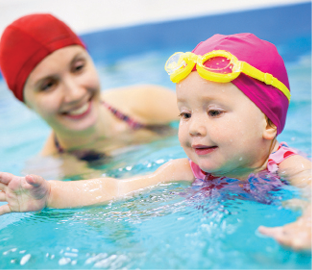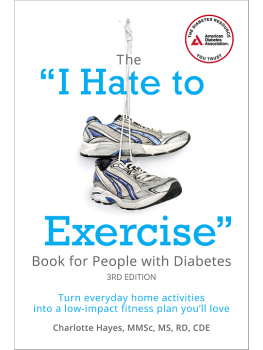Contents
Encouraging Physical
Activity in Toddlers
Moving Matters Series
Steve Sanders, EdD

www.gryphonhouse.com
Copyright
2015 Steve Sanders
Published by Gryphon House, Inc.
P. O. Box 10, Lewisville, NC 27023
800.638.0928; 877.638.7576 (fax)
Visit us on the web at www.gryphonhouse.com.
All rights reserved. No part of this publication may be reproduced or transmitted in any form or by any means, electronic or technical, including photocopy, recording, or any information storage or retrieval system, without prior written permission of the publisher. Printed in the United States. Every effort has been made to locate copyright and permission information.
Cover photograph courtesy of Shutterstock Photography, www.shutterstock.com, 2015. Interior photographs courtesy of Shutterstock.com, Kaplan Early Learning Co., and Steve Sanders, 2015.
Bulk Purchase
Gryphon House books are available for special premiums and sales promotions as well as for fund-raising use. Special editions or book excerpts also can be created to specifications. For details, call 800.638.0928.
Disclaimer
Gryphon House, Inc., cannot be held responsible for damage, mishap, or injury incurred during the use of or because of activities in this book. Appropriate and reasonable caution and adult supervision of children involved in activities and corresponding to the age and capability of each child involved are recommended at all times. Do not leave children unattended at any time. Observe safety and caution at all times.
Library of Congress Cataloging-in-Publication Data
Sanders, Steve (Steve W.)
Encouraging physical activity in toddlers / by Steve Sanders, EdD.
pages cm. -- (Moving matters series)
Includes bibliographical references and index.
ISBN 978-0-87659-050-8
1. Physical education for children--Study and teaching (Early childhood) 2. Movement, Aesthetics of--Study and teaching (Higher). 3. Early childhood education--Activity programs. 4. Toddlers--Development. I. Title.
GV443.S194 2015
613.70832--dc23
2015009506
Chapter 1
The Importance of Physical Activity for Toddlers

You are taking a big step to
help the toddler in your care
by learning about motor skills
and ways to support physical
activity. Being physically active
every day is important for
the healthy growth and
development of toddlers. In
fact, by doing so, you will help provide the movement foundation for the toddler to stay physically active and healthy throughout life.
Our discussion of toddler physical development will include information on the types of motor skills that should be practiced, setting up the activity environment, and providing appropriate skill-development equipment. This book includes ideas for activities that caregivers and parents can participate in with the toddler. Simple and presented in a straightforward way, the activities do not require a lot of equipment. However, if you do need a toy or
equipment item, the discussion will
clarify what you need to have on
hand. Activities included in this
book are funyou and the
toddler are going to have a
great time!
As a caregiver or parent, you
have an important role in the physical-skill development
process. Please keep in
mind that the process for
toddlers is different because at
no time in a childs life will
her physical skills change as rapidly as during the
toddler years.

Remember that when the toddler begins walking, she has learned only a few other physical skills. She cannot throw a ball and hit a target. She does not know how to jump and land on two feet or kick a ball into a net. She cannot yet walk across a balance beam or dribble a ball. All these skills must be learned. To eventually master these physical skills, the first steps are exposure to what the skills are and exploring and experimenting with what the body can do. These skills will be learned if the toddler has lots of opportunities to have fun with movement.
The toddler will master very few skills during this time. She will not become efficient at jumping, throwing, kicking a ball, striking a ball with a bat, catching, galloping, or skipping. Sometimes the toddler will scream with excitement at her accomplishments; other times she will be frustrated because she is unable to hit the target or kick the ball. The toddler will appear awkward and unable to repeat movements, and every attempt at a skill will look different. When the toddler is playing with a ball, the ball will appear to control the toddler. This is part of the normal process of toddler skill development.
However, the time between learning to walk and becoming a preschooler is extremely important to prepare the toddler for eventually becoming efficient and competent at a variety of physical skills. Dont think of yourself in the traditional role of a teacher trying to make sure the child learns a specific skill to do well on a testthere is no test. The immediate goal is not to help the toddler refine skills so she can throw or jump better. Her physical skills are just emergingshe is learning the basics. Your role is to guide her as you provide the safe environment, appropriate equipment, and time for the toddler to experiment with all the new movements that she can do with her body. Learning as a toddler is all about exploration and understanding how the world (including the toddlers body) works.

Adults do not have to be athletes or have high levels of physical skills to help the toddler acquire a foundation of basic motor skills. Your role is to be involved, to play with the toddler every day, to be a model, and to provide opportunities for discovery and practice. These opportunities help connect a toddlers muscles and brain and move her toward becoming efficient and competent in her physical skills through the preschool and elementary years. Experience and research show that toddlers who lack appropriate practice and miss exploring and experimenting with what their bodies can do will later struggle to be competent in physical skills.
Toddlers Are on the Move

Parents and caregivers must understand that learning basic physical skills such as jumping, kicking, throwing, rolling, and balancing takes a lot of effort for toddlers. Their love for physical activity will help them learn many new movements. As their skills improve, they will begin to throw and kick balls, strike balls into the air, walk up and down stairs, run, and even pedal tricycles. They may attempt to do forward rolls and stand on their heads. Practically every item in the cabinet or centerfrom pots and pans to wooden blockswill become a musical instrument that the toddler will want to drum and bang.











